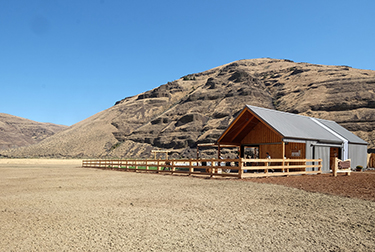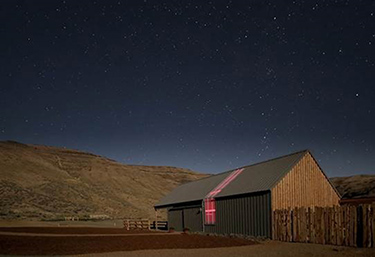|
Subscribe / Renew |
|
|
Contact Us |
|
| ► Subscribe to our Free Weekly Newsletter | |
| home | Welcome, sign in or click here to subscribe. | login |
Architecture & Engineering
| |
December 12, 2018
Signal designs experience center for Oregon's Cottonwood Canyon
Signal Architecture + Research of Seattle designed the 1,500-square-foot Cottonwood Canyon Experience Center, which opened in October in Cottonwood Canyon State Park near Condon, Oregon.
Environmental education, outdoor learning, regional activities and cultural events can take place at the multi-use facility, which includes interpretive displays and a library.
Cottonwood Canyon is Oregon's second largest state park at over 8,000 acres. It was established in 2013 on what had been the Murtha CowCamp ranch.
Signal said the center is part of a 2011 comprehensive plan for the park by Portland-based Walker Macy. The goal was to create a recreation experience that aligns with the scale of the landscape. The plan also called for six cabins and a shower/bath facility.
The Oregon State Parks Foundation helped raise funds for the center.
Signal said the durable structure is inspired by historic barns along the John Day River. It has a shaded outdoor space, windbreaks, wood stove hearth, outdoor kitchen, a 5-kilowatt rooftop solar array and walkways connecting to camping and cabins.
An interior ‘heavy wall' can be used for storage and a weather-protected, open side of the building lets indoor activities spill out to the meadow.
Outdoor gathering spaces are shielded from heavy winds, afternoon sun and weather. Shaded outdoor areas provide workspace for summer institutes and research programs on Cottonwood Canyon and the John Day River.
The roof has a long ribbon-like skylight that emanates light at night and brings in daylight. Signal said the light conveys the message that someone is here, like smoke coming from a chimney in the Old West.
The architect said the center also takes advantage of site specific, low-tech opportunities such as a juniper arbor that protects against direct sun. The juniper is a sustainable forest product that was sourced locally.
Large doors are concentrated on the leeward side to provide shelter from wind. Other doors allow cross ventilation. Durable exterior materials and a wood interior were used to reduce maintenance.
The team also included Tapani Inc., contractor; Walker Macy, landscape architect; Lund Opsahl, structural engineer; and Sunbridge Solar/Solarworld, solar.




